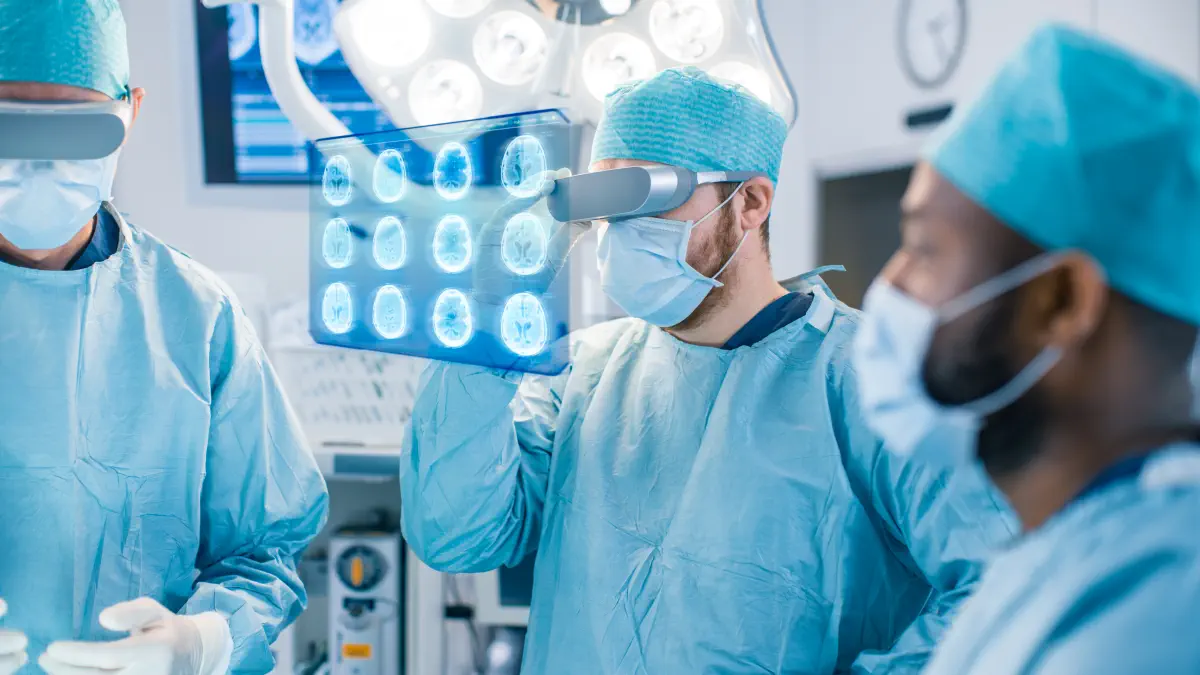Modern medicine is developing at a dizzying pace and uses increasingly advanced technologies that allow more precise diagnosis and treatment of diseases. At the same time, the development of technology should not dominate the treatment process itself and the human being should remain at the centre of attention. The humanisation of medicine in the technological age is becoming more and more important and necessary to provide patients with dignified medical care. In this article, we will outline what challenges the development of technology brings and why the humanisation of medicine is so important in the technological age.
Technology as a tool, not an end
Technology should be seen as a tool to help diagnose and treat diseases, not as an end in itself. In the technological age, where medicine is using increasingly sophisticated tools such as artificial intelligence and surgical robots, it is important to remember that it is the human being who remains the most important. Humanising medicine helps to ensure that patients receive appropriate medical care that takes into account their needs and expectations.
Technology and the doctor-patient relationship
Technology can affect the doctor-patient relationship. On the one hand, technology can make the treatment process easier and more efficient, but on the other hand, it can affect the interaction between doctor and patient. It is important that medical staff use technology in a way that does not limit the interaction with the patient but, on the contrary, allows them to better understand the patient's needs and to tailor medical care to their individual needs.
Time value
Technology can help reduce the time it takes to diagnose and treat illnesses, which contributes to faster patient recovery. However, it is worth remembering that the treatment process should first and foremost be patient-centred and take into account the needs of the patient, not just the value of time.
Access to medical care
Technology can also help make medical care more accessible to patients, especially those who live in remote areas. With the help of telemedicine, patients can receive medical consultations and diagnosis of diseases without having to leave their homes. However, it is worth remembering that telemedicine should be used responsibly and take into account the individual needs of patients.
Risks arising from the use of technology
Developments in medical technology also carry risks for patients. Inappropriate use of technology can lead to medical errors, which can have serious consequences for patient health. It is therefore important that medical staff are properly trained in the use of technology and use it in a safe and responsible manner.
Humanising medicine in the technological age
The humanisation of medicine in the technological age is becoming increasingly important as it allows for a better understanding of the patient's expectations and the adaptation of medical care to their individual needs. Introducing the humanisation of medicine into the treatment process makes it possible to provide patients with dignified medical care that takes into account their needs and expectations. By humanising medicine, medical staff can work more efficiently and effectively, which will improve the quality of medical care for patients.
How to introduce the humanisation of medicine into the treatment process?
Introducing the humanisation of medicine into the treatment process requires a change in the approach of medical personnel and adapting it to the individual needs of the patient. It is important that medical staff treat the patient holistically, taking into account the emotional and psychological needs of the patient in the treatment process and not only the physical aspect.
It is also crucial to increase the amount of time spent with the patient to enable the doctor to get to know the patient better and understand their needs. It is also worth involving the patient's family in the treatment process, as this can help to better understand the patient's needs and provide appropriate emotional support.
In conclusion, the humanisation of medicine is extremely important in the technological age. Introducing a humanistic approach to the treatment process allows patients to receive dignified medical care that takes into account their needs and expectations. Technology should be treated as a tool, not an end, and should be used to improve the quality of medical care. Therefore, it is important that medical staff are properly trained in the use of technology and use it in a safe and responsible manner. Implementing the humanisation of medicine into everyday medical practice requires a change in the thinking and approach of medical staff, who should treat the patient as a whole, taking into account their emotional and psychological needs in the treatment process. Adapting medical care to the individual needs of the patient and increasing the amount of time spent with the patient and involving the patient's family in the treatment process are key to the humanisation of medicine.
It is important not to forget in the technological age that the human being should remain at the centre. Technology can help diagnose and treat illnesses, but it should not replace the doctor-patient interaction that is essential to the healing process. This is why the humanisation of medicine is so important in the technological age, because it allows us to provide patients with dignified medical care that takes into account their needs and expectations, while at the same time using the benefits of technology to improve the quality of medical care.
